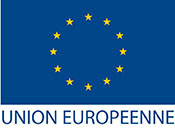Modelling and mapping soil biodiversity patterns and functions across Europe
The current status and trends in soil biodiversity across Europe are poorly known, and adequate taxonomical and functional indicators are needed to evaluate the vulnerability of soils to climate change.
Objectifs
MINOTAUR aims to provide models, maps and policy-relevant indicators with validated reference values for monitoring soil biodiversity and associated functions. Moreover, it will aim to understand how agricultural practices can contribute to climate change mitigation and adaptation at regional and national levels across the EU.
The project will collaborate with relevant EU research projects, international soil biodiversity networks and programs to harmonize and integrate soil biodiversity data and contribute to support long-term harmonized EU soil information and international reporting.
Attendus
Data collection and harmonization
Lead: Rajasekaran Murugan (BOKU); Co-lead: Antonio Bispo (INRAE)
WP2 will collect, harmonize and organize the existing data and metadata on soil biodiversity available from previous EU and national projects available through the consortium, EJP SOIL partners as well as external sources (es. LUCAS). Collaborations will be established with existing databases (es. EUdaphobase) and other EU initiatives which will allow to assemble existing data into a comprehensive open dataset. The harmonized data pool will be synthesized to identify knowledge gaps in existing databases and facilitate biodiversity assessments at various scales, from local to sub-regional, culminating in a mechanism for regional-scale characterization. The overall objective is to assess quality standards, establish data management and processing protocol for harmonization of data for pooling, integration and quality control for data accessibility, comparability and common reuse.
Soil biodiversity indicators
Lead: Jack Faber (WR); Co-lead: Guenola Peres (ACO)
This WP aims to identify and select policy-relevant indicators describing soil biodiversity taxonomical and functional status, using data from previous and ongoing EU projects and national monitoring. Regarding functional indicators WP3 will specifically address the ES mentioned in the call: C sequestration, SOM decomposition, regulation of water and nutrients, and disease supression. Significant advances are expected concerning further development of functional indicators as well as the definition of reference values representing healthy soils, and quantitative mechanistic relationships with soil functions and ecosystem services. References will be elaborated in relation to soil type, land use and management and climate zones to cover relevant “context scenarios”. The taxonomic and functional indicators will be evaluated in terms of their vulnerability and resilience for climate change, in view changes in average temperature and moisture conditions and the increased occurrence of extreme conditions.
Validation of selected indicators and models with targeted measurements
Lead: Cristina Aponte (CSIC); Co-lead: Guenola Peres (ACO)
WP4 aims to parameterise the selected indicators (WP3) and biodiversity models (WP5), and validate their sensitivity and ranges in relation to soil type, climate and management practice (“context scenarios”). To that end new empirical data will be obtained from three different sources: i) measurement from LTEs will provide data related to current climatic conditions; ii) experimental incubarions (laboratory models) will reveal how values change under future climate change scenarios; iii) chronosequences will provide insight of how values have changed the over the past decades. Biodiversity indicators, soil functions and ES will be assessed simultaneously to further allow the validation of diversity-function models.
Modeling and spatial mapping of soil biodiversity and its functions
Lead: Mickaël Hedde (INRAE) ); Co-lead: Stefano Mocali (CREA)
In the WP5, we will model the spatial distribution patterns of soil fauna assemblages from the local to the wide scales in response to climate and habitat conditions, with earthworms as first study case. Based on the obtained data, we will compute and map selected indicators and we will use the model to compute projections of biodiversity under future climate scenarios. Depending on available datasets, we will test whether the model is robust enough to be applied (i) to earthworms in other biogeographical contexts and (ii) to other group(s). If necessary we will adapt the model to increase its applicability domain
Communication and dissemination
Lead: Stefano Mocali (CREA); Co-lead: Jack Faber (WR)
This WP will include networking within EJP SOIL (WP9) and its internal projects, dissemination planning and the development of a Dissemination Pack, ensuring that project results will be adequately transferred to stakeholders (policy-makwers, farmers associations and consultants). Moreover, the close collaboration with key stakeholders such as JRC/LUCAS, Eudaphobase and SOILBON from the project start will promote the alignement of soil biodiversity monitoring strategies and perhaps the implementation in member states of EU Biodiversity Strategy requiring Member States to “map and assess the state of ecosystems and their services in their national territory”. Following-up on SIREN, the interaction with EEA regarding knowledge needs and research priorities for indicators for soil quality monitoring and ES assessment will be continued.
Date
1/11/2021 – 31/10/2024
Financement
Programme Horizon 2020 – European Joint Programme on Soil 
Union Européenne 
Principaux partenaires
- Voir siteweb
Contact
Stefano Mocali, CREA, Italy (
ou pour l'UMR Eco&Sols Mickael Hedde, INRAE, France (







